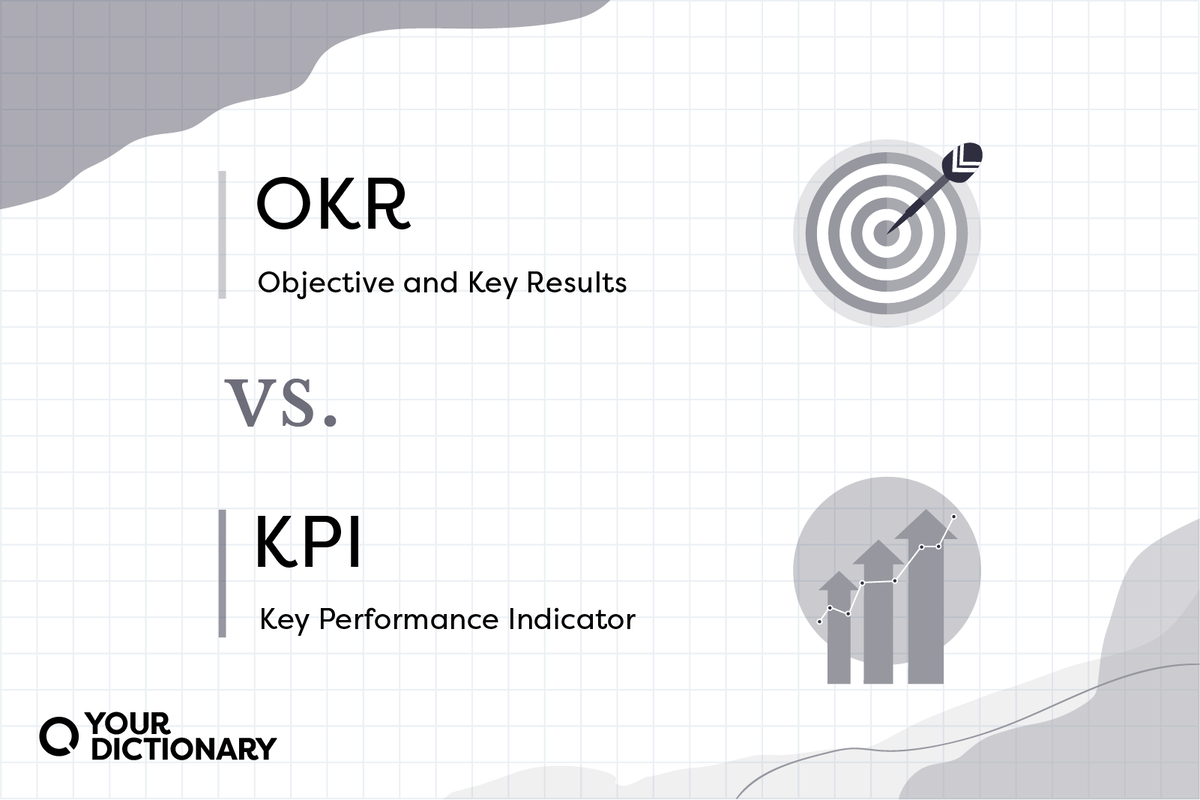
KPI (Key Performance Indicator) and OKR (Objective and Key Results) are popular methods of tracking and managing performance and success in the workplace. Although both terms are similar, their goals and scope are different — meaning they aren’t one-size-fits-all solutions for your business.
What Does “OKR” Stand For?
OKR stands for “Objective and Key Result.” When referring to OKRs, an objective is a long-term goal, and a key result is a milestone that marks progress toward that goal.
Because OKR is an abbreviation, it is almost always spelled out in capital letters and is pronounced as “Oh-Kay-Are.”
The term is usually plural, OKRs, or “Objectives and Key Results,” as most organizations have multiple goals.
Need to Know
The use of OKRs to gauge progress and results started at the American technology company Intel in the 1970s.
Examples of “OKR” in a Sentence
You’ll often see OKRs in a sentence when describing a project or team’s objectives.
- OKRs for engineering teams usually relate to speed and reliability of products.
- OKRs are most commonly set on a quarterly and annual basis so that milestones can be met throughout the year.
- Good OKRs are achievable, and display true growth within a company.
- My company uses project management tools to keep track of our OKRs.
What Does “KPI” Stand For?
KPI, meaning “Key Performance Indicator,” is a business abbreviation typically used in project planning. Effectively, a KPI is a specific statistic that displays efficiency or success within an organization.
KPIs vary significantly between industries and even between organizations.
Examples of "KPI" in a Sentence
Monitoring the results and trends of certain KPIs help organizations determine what’s working and what needs improving to increase those KPIs.
- Our company’s KPI for this quarter is our number of new customers.
- The total number of social media likes can be a helpful KPI.
- Let’s focus on our first KPI for the products sold in one sales period.
- Our best KPI involves the members enrolled during the season.
When To Use OKRs and KPIs
OKRs and KPIs aren’t interchangeable, but setting and hitting quality OKRs often requires the use of KPIs.
A company can reach the objective portion of an OKR by hitting several milestones along the way (the “KRs” or key results). The metrics a company measures for KRs are often the same as the organization’s KPIs.
OKR vs KPI Example
Monitoring changes in KPIs over time is a great way to improve a business. But, setting milestones and tracking KRs using KPIs can help some businesses better achieve their objectives.
For example, if the objective of a local store is “sell twice as much product as last year,” some key results may be “increase advertising by 50 percent in three months” or “increase number of customers to 100 per day by the third quarter.”
In this case, the store employs its KPIs, “amount of advertising” and “customers per day,” which are typical performance indicators it already uses to track success.

Examples of Measurable Goals and Objectives
What are SMART goals?
SMART is an acronym used in project management and business goal setting, meaning “specific, measurable, achievable, relevant, and timebound.”
OKRs should be SMART in that they should clearly define success, be quantifiable with data, be reasonably within an organization’s limits, fit well into an organization’s workflow, and have a specific time frame or deadline.
SMART key results will help OKRs be clearer and help organizations form a plan to achieve their goals.

Writing Effective Performance Objectives
Tips To Remember the Difference Between “OKR” and “KPI”
To remember the difference between OKRs and KPIs, think of a road trip.
- The objective is to reach the destination by a specific time
- The KRs, or key results, are milestones along the way, like cities or other landmarks
- Tracking how quickly you hit each milestone will tell you if you are on task to achieve your objective.
- The KPIs are the meters and gauges of the vehicle — the speedometer, gas gauge, and odometer are there on every drive to tell you about your drive, its speed, efficiency, etc.
While you’re on your road trip (the OKR) your gauges (KPIs) are good indicators about how quickly you will hit milestones, and how well your vehicle is performing between each stop.
If you incorporate OKRs, KPIs, or both into your businesses and projects, you might find your road trip to success becoming less of a slog and more like a race to the finish line.

Examples of Jargon in the Workplace